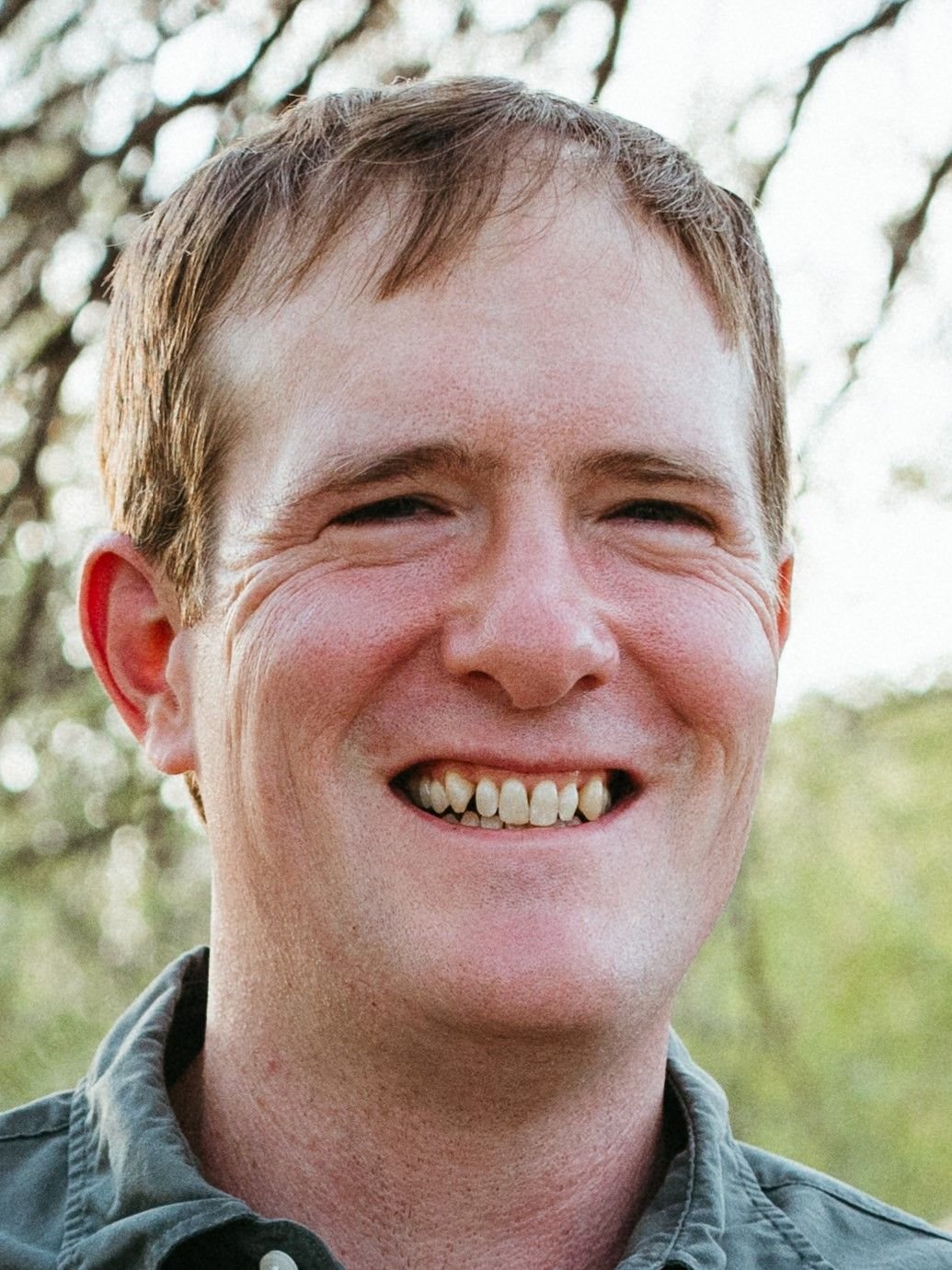Ed Finn is the founding director of the Center for Science and the Imagination at Arizona State University where he is an associate professor in the School for the Future of Innovation in Society and the School of Arts, Media and Engineering. In addition to co-editing the Climate Action Almanac, he is the author of What Algorithms Want and co-editor of several books including Frankenstein: Annotated for Scientists, Engineers, and Creators of All Kinds and Future Tense Fiction.
A post by Ed Finn and Joey Eschrich
The world is on fire, we have been told again and again. The seas are rising, the storm clouds are gathering. But who can fix a planet? We look outside and for most of us, most of the time, the weather is fine—maybe a little hotter, a little drier than the year before, but there is no catastrophe visible out the window. Because the climate crisis happens at planetary scale, on a timeline of seasons and years and eons, it is hard to see.
At the same time, many people are exhausted by the climate debates, which have been stretching on now for decades. Scientists are exhausted in their unceasing efforts to sound the alarm and provide further data on the likely consequences of human carbon emissions. Activists are exhausted by the trench warfare of policy reform and incremental political progress, where every yard of gain is seemingly offset by a reactionary rollback somewhere else. Climate anxiety can feel ubiquitous, but after years of blaring alarm bells, the dire warnings threaten to become background noise—a dispiriting drone for anyone paying attention, but too quotidian to catalyze change.
Joey Eschrich is the managing editor for the Center for Science and the Imagination at Arizona State University. He is the co-editor of several anthologies of speculative fiction including the Climate Action Almanac, Cities of Light and The Weight of Light.
As anyone following the global climate discussion knows, we don’t have time for this. The UN’s Intergovernmental Panel on Climate Change (IPCC) has declared that the years leading up to 2030 will be critical in determining what the rest of the century looks like. And yet our structures for addressing and even talking about coordinated climate action are struggling to contend with the scale of the challenge. National legislation gets bogged down in partisan politics, while international agreements lack enforcement and specificity—and the details of both are so tortuous they could easily fill a book.
In short, we are suffering from a crisis of climate imagination. To begin with, it is hard to imagine causal chains stretching across the globe, and even into the upper atmosphere. Climate change is vast, abstract, and complex, all features that make it difficult to visualize and comprehend. Even the most dedicated policy experts and long-term thinkers who have participated in many iterations of the UN climate negotiations since the 1990s tend to have a limited scope: let’s get this number to go down, or this other figure to go up.
Even when people do imagine it, they spend most of their time contemplating disaster. When we talk about the future of climate change, we’re mostly talking about how bad things will get. Humans are gifted at catastrophizing, because anticipating calamity is an important survival skill. But now that we’re creating problems at a planetary scale, we need to do better than individual survival. Navigating the twenty-first century, preserving our ecosystems, and keeping the Earth habitable for future generations will require more commitment and moral courage than packing a go-bag or plotting escape routes. It will require us to imagine positive futures together.
Why is this important? Because large-scale, transformative change is most effective when we’re working towards something. We have few compelling narratives of the climate future we want, and are inundated by stories of impending disaster. Yet history has taught us time and again that hope is what changes the world. If we want to weather the stormy seas ahead, we have to come to a shared understanding of what a successful human response to climate change looks like at every level, from individual families and neighborhoods to cities, regions, and the planet as a whole.
The other reason we have a climate imagination crisis is that the status quo continues to reassert itself, reiterating the same narrowly conceived, self-perpetuating story about ceaseless economic growth and path dependencies. Business as usual carries on even in the face of increasingly dire floods, fires, and droughts, because it is so difficult to conceive of transformational change. Policymakers in the trenches of international climate negotiations often have no story, no grand vision, of what “victory” might look like. Local politicians and community leaders know what their communities are afraid of, but lack narratives about what a flourishing, resilient future might entail. Even activists on the front lines of change might be so caught up in a particular political or policy battle that they struggle to step back and consider the larger question of what we’re striving to build.
To address this challenge, our team at the Center for Science and the Imagination has recently released the Climate Action Almanac. This book is for all of you: everyone ready to imagine a hopeful, ambitious, inclusive climate future. We have called it a climate action almanac because, like a farmer’s almanac, it is a user’s guide to the real world, rather than a magic eight ball revealing all of the answers. Like an agricultural almanac, you might consult this volume to help sort out how, when, and where to cultivate ideas. You might read it to be inspired by tales of other communities and individuals taking positive steps to tackle their own climate challenges. You might refer to it as a kind of imaginary policy playbook, filled with stories speculating about what the world might be like if we embraced fresh perspectives on community stewardship of natural resources, nonhuman agency, and many other things that might seem impossible to change in the present.
Imagination is the ignition system for everything we will need to navigate the decades ahead: foresight, empathy, and resilience. To contend with the risks and challenges of our climate future, we first have to practice scanning the horizon, anticipating what might come next, and building up a capacity for future planning—starting at the level of individuals and local communities, then growing to regional coordination and national and global governance. To grapple with the destruction and upheaval that will inevitably attend our changing world, we will need to hone our empathy: towards one another, towards those other species so essential to planetary ecosystems, and towards those future generations whose lives will be shaped by the choices we make.
Our climate action almanac shares these manifold possible futures through the medium of speculative fiction. A good story about the future can invite many different people with varying experiences and expertise to a shared space of imagination. That story can also set the stage for more creative and playful thinking about changes and new possibilities, a kind of speculative make-believe. Hardened policy veterans will entertain ideas in fiction that they would never countenance in “real life,” allowing for open-ended conversation that illuminates the present as much as it does a possible future. Harmless as they may seem, stories can change the world. A good narrative is a microcosm of a possible world that encapsulates complexity, competing forces, and sophisticated causal models. Spending time in multiple possible climate futures, as readers of this book will do, is a way to explore a broad spectrum of possibility: a whole collection of futures that reaches beyond what and who to the deeper questions of why things work the way they do, and how we might change course.
This book is the culmination of a two-year, global project to kindle our collective ability to imagine positive climate futures. It includes fiction and nonfiction exploring climate chaos and constructive climate action in a variety of human and physical geographies around the world, from India and China to Argentina, Norway, Senegal, Germany, the United Kingdom, Malaysia, Sri Lanka, the United States, Nigeria, Canada, and beyond. These missives imagine the future of sprawling, torrid equatorial cities and remote isles, with settings ranging from quiet backyard gardens and agricultural regions to futuristic floating metropolises and desert villages. We invited our contributors to share narratives that are grounded in actual scientific and technological understandings, responsive to cultural and social particularities, and insistent upon equality and justice. They responded with visions of the future that embrace the dizzying complexities of the present and the full sweep of history, encompassing both its triumphs and its outrages. They describe processes of change that are as diverse as the ecosystems and communities that inhabit our planet—climate action that builds up and out from lived experiences on the ground, rather than dictated, one-size-fits-all, from on high.
If we hope to act quickly and effectively enough to prevent the worst possible outcomes of the climate crisis, we need stories that celebrate diversity and nuance, taking advantage of situated knowledge from across the globe, rather than stories that simplify and flatten. We need stories about diverse communities addressing climate change on their own terms, finding resilience and even joy in the possible futures they envision for themselves and the world.
Like all of our work at the Center for Science and the Imagination, this book is an invitation: these stories are not meant to be predictive but inspirational. And so we invite you, dear reader, to answer the same questions we posed to our contributors. What does a positive climate future look like to you? What does it feel like, and who will be there to live in that world, and tell its stories?
* * *
The following blog post is adapted from the introduction to the Climate Action Almanac, edited by Ed Finn and Joey Eschrich


